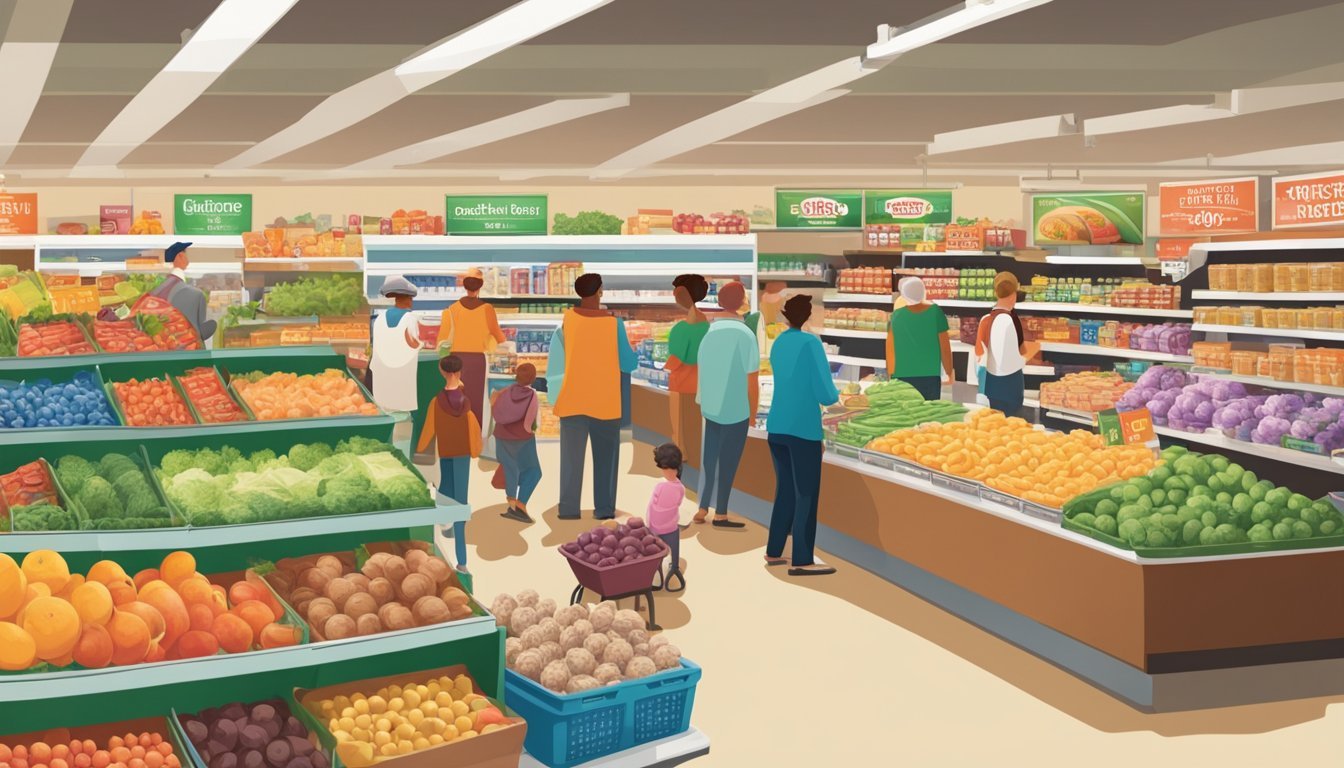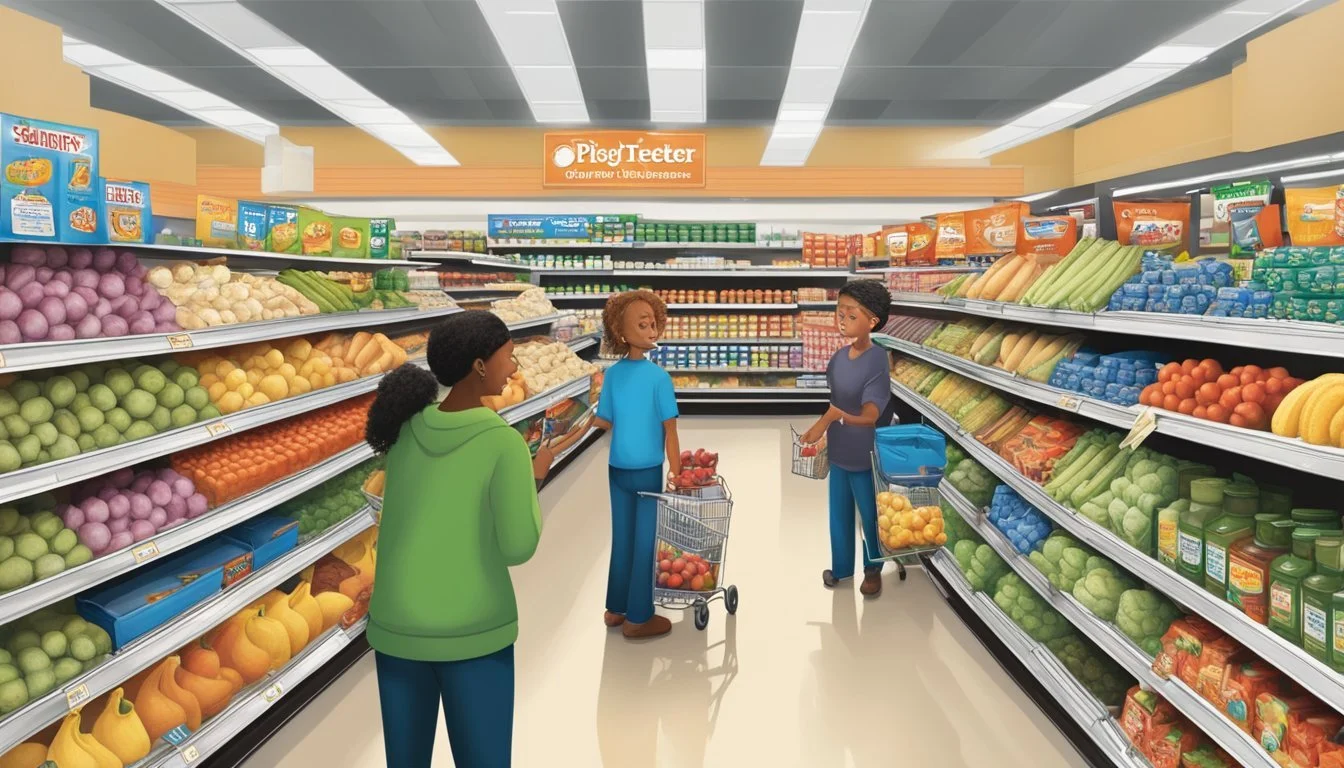Is Harris Teeter Cheaper Than Piggly Wiggly?
Comparing Grocery Store Prices
Part of Our Grocery Store Guide with Details on Harris Teeter Prices and Piggly Wiggly Prices
When comparing grocery store prices and shopping experiences, consumers often weigh their options meticulously. Harris Teeter and Piggly Wiggly are two prominent supermarket chains that serve the southern and midwestern United States, each offering a distinct shopping experience. Harris Teeter, known for its clean stores and wide variety of products, is often perceived as a higher-end grocery option, whereas Piggly Wiggly, with a more regional feel, may come across as a more down-to-earth retail choice.
The question of whether Harris Teeter is cheaper than Piggly Wiggly does not have a straightforward answer, as pricing can vary based on a multitude of factors including location, product types, and weekly deals or discounts. On average, industry analyses have shown that while Harris Teeter may offer competitive pricing on certain items, overall, stores like Food Lion, Aldi, and Lidl may provide more cost-effective options with their lower-priced store brands and discounts—making a direct comparison between Harris Teeter and Piggly Wiggly more complicated.
Nevertheless, consumers report that Piggly Wiggly's own-brand items offer a balance of quality and value, often at prices lower than national brands. It's also noted that Piggly Wiggly's rating based on various criteria, including brand recognition, suggests it has a solid base of loyal shoppers. Price comparisons should therefore take into account not only the sticker price but also the shopping experience and brand loyalty, which can influence consumer perception of value.
Grocery Store Landscape
The grocery store landscape is shaped by diverse players with varying business models that influence pricing and availability. This section provides an in-depth look at the key components of the supermarket industry as it relates to the comparison of Harris Teeter and Piggly Wiggly.
Supermarket Overview
Supermarkets are integral parts of the retail sector, providing a wide range of food and household products. These stores vary greatly in size, product selection, and pricing strategies, catering to the different needs of consumers.
Key Players and Ownership
Kroger and Albertsons are two of the largest supermarket chains in the United States. Kroger is the owner of Harris Teeter, while Safeway—a part of the Albertsons family—competes in similar markets. C&S Wholesale Grocers, another key player, has entered the landscape with proposed acquisitions.
Regional Market Analysis
In the mid-Atlantic region, particularly around Maryland, Virginia, and the DC area, grocery chains like Harris Teeter compete directly with Piggly Wiggly and regional stores like Food Lion. Consumer choices are influenced by store proximity, product diversity, and pricing.
The Role of Distribution Centers
Distribution centers are the backbone of grocery chains, ensuring timely and efficient movement of goods. Regional hubs allow chains to maintain a fresh and diverse inventory, vital for markets like DC and Virginia, where customer demand is high.
Proposed Acquisitions and Mergers
The Washington Business Journal reported a proposed merger between Kroger and Albertsons. Regulatory considerations have mandated that some store locations, such as ten Harris Teeter stores, be divested, possibly to Piggly Wiggly's owner, keeping market competition fair.
Grocery Store Brand Dynamics
National brands and store brands, such as those offered by Aldi and Lidl, play a significant role in attracting different customer segments. Harris Teeter, known for its selection of national brands, faces competition from stores like Lidl, with its focus on affordable own-label brands.
Alternative Grocery Models
In addition to traditional supermarkets, Amazon with its acquisition of Whole Foods Market, and other chains like Trader Joe's, Wegmans, and Sprouts Farmers Market, illustrate the diversity of the grocery sector. They often serve niche markets and offer unique shopping experiences, such as emphasis on organic products or an extensive range of international foods.
Comparing Harris Teeter and Piggly Wiggly
When assessing Harris Teeter and Piggly Wiggly, it's important to consider various factors from pricing strategies to store recognition to determine which grocery store offers the better deal to customers.
Price Benchmarking
Harris Teeter is perceived as offering a high-quality shopping experience, which may reflect in their pricing. In contrast, a study suggests that Food Lion, a competitor, has prices roughly 12% lower than the average, which positions Piggly Wiggly and Harris Teeter at potentially higher price points. However, the specific prices for products such as fresh produce or dairy products can vary based on location and promotions.
Product Assortment and Quality
Both stores offer a range of products including specialty items, organic, and prepared foods. Harris Teeter is known for its fresh produce and meat, while Piggly Wiggly also offers a selection that emphasizes quality and freshness. Each store has its own store brands with Harris Teeter's often perceived as comparable to national brands.
Brand and Store Recognition
Harris Teeter has substantial brand recognition within its operational regions and is further underscored by its ownership by Kroger since 2014. Piggly Wiggly is recognized for its longstanding presence, especially in the South and Midwest.
Customer Experience and Ratings
Evidence suggests that Harris Teeter has an overall score of 4.2 based on customer ratings, positioning it as a reputable local grocery. Piggly Wiggly also maintains good customer relations, but direct comparisons in ratings suggest slight variation in customer experience.
Location and Accessibility
Harris Teeter operates primarily in the Southeast and the mid-Atlantic regions, often in more suburban and urban settings. Piggly Wiggly has a stronghold in the South and Midwest, serving many smaller communities with fewer grocery options.
Discounts and Savings Strategies
Regular sales and deal cycles enable savings at both Harris Teeter and Piggly Wiggly. Customers can also take advantage of discount codes and loyalty programs which may offer substantial savings on the shopping cart total upon checkout.
Operational Efficiencies
Both Harris Teeter and Piggly Wiggly are continually optimizing their operational efficiencies. For instance, ten Harris Teeter locations were scheduled to be sold to the owner of Piggly Wiggly in 2023, which may point to strategic consolidations to improve efficiency and market presence.
Consumer Trends and Preferences
The grocery landscape is evolving as consumers become increasingly selective, prioritizing stores that meet their specific needs for quality, convenience, and value.
Shifting Consumer Needs
Consumers are seeking supermarkets that adapt to their changing lifestyles. Families want stores offering a variety of products that cater to different dietary preferences and life stages. Retailers like Harris Teeter and Piggly Wiggly must adapt their offerings to retain customers.
Demand for Organic and Locally Sourced Foods
The demand for organic and locally sourced fresh produce continues to grow. Shoppers lean towards retailers with a robust selection of these products. Both Harris Teeter and Piggly Wiggly have an opportunity to expand their organic range to meet consumer expectations.
Convenience and Online Shopping
Ease of access through online shopping platforms is imperative. Both stores can benefit from enhancing their digital presence to offer consumers the convenience of shopping from home. Amazon's influence has set a benchmark for grocery delivery that they need to match.
Brand Loyalty vs. Price Sensitivity
Brand recognition can influence a customer's choice; however, price sensitivity remains a dominant factor. Shoppers often balance loyalty to store brands with the allure of savings, suggesting that retailers should strategize pricing to cater to both factors.
Value of Store-Wide Sales and Promotions
Sales and promotions are powerful tools for driving customer traffic. Harris Teeter and Piggly Wiggly could capitalize on strategic deals to enhance brand value and incentivize purchases across various product categories.
These focal points demonstrate that both Harris Teeter and Piggly Wiggly must closely align with consumer trends and preferences to remain competitive within the dynamic grocery market.
Implications of Competitive Pricing
Competitive pricing between grocery chains like Harris Teeter and Piggly Wiggly can have a profound impact on multiple facets of the grocery shopping experience. The following subsections discuss how their pricing affects local markets, consumer choice, corporate strategies, and other relevant aspects.
Effect on Local Markets
Local markets are directly influenced by the pricing decisions of Harris Teeter and Piggly Wiggly. When one chain lowers its prices, it can pressure neighboring competitors to do the same to maintain their customer base. This could lead to a localized price war, which might benefit consumers in the short term, but could potentially harm small local grocery stores unable to compete with the pricing of larger chains.
Influence on Consumer Choice
The pricing difference between Harris Teeter and Piggly Wiggly can sway consumers' choices. Customers often prioritize their budgets, opting for the store offering the best deals on store brands and national brands alike. This encourages consumers to be more price-conscious and can lead families to consistently shop at the chain that provides the best value for their money.
Impact on Grocery Chain Strategies
Competitive pricing impacts grocery chain strategies significantly. Both Harris Teeter and Piggly Wiggly must continuously analyze their pricing in comparison to one another to ensure they remain competitive. This could result in the introduction of new pricing strategies, such as loyalty programs, personalized deals, or discounts on store brand products to retain and attract customers.
Benefits to the End Consumer
Price is a key determinant for consumers, and competitive pricing among grocery chains often leads to direct benefits for shoppers. Lower prices and regular deals can increase the affordability of groceries for families, potentially improving their overall quality of life by freeing up household funds for other necessities.
Challenges Faced by Smaller Chains
Smaller grocery chains may face challenges in competing with the pricing strategies of Harris Teeter and Piggly Wiggly. Their ability to offer similar or lower prices is often limited due to lack of scale, which may result in loss of customers. These chains could be compelled to find niche markets or offer unique products and services that the larger chains do not provide to remain viable.
Conclusion
When assessing whether Harris Teeter is cheaper than Piggly Wiggly, several considerations come into play. Both grocery chains offer a selection of products that cater to their respective customer bases. Quality, location, and weekly specials all influence the pricing landscape.
Harris Teeter often invests in distribution efficiencies to ensure well-stocked shelves and fresh options for its consumers. They frequently host promotional events and offer discounts through their VIC loyalty program, which can result in cost savings for regular shoppers.
Piggly Wiggly, recognizable for its brand longevity and community presence, sustains a favorably competitive stance through localized deals and a commitment to customer satisfaction. They highlight cost reductions via their weekly circulars, appealing to budget-conscious patrons.
Shopping habits also dictate potential savings as both stores present opportunities to cut costs. Loyal customers may find their preferred store to be cheaper based on their specific needs, or usage of store-specific loyalty programs.
Aspect Harris Teeter Piggly Wiggly Distribution Efficient, ensuring fresh inventory Strong regional presence Specials VIC loyalty program, weekly promotions Weekly circulars, localized specials Loyalty Programs VIC card discounts Piggly Wiggly card savings Product Selection Broad, with an emphasis on freshness Focused on essentials with local flair
In the end, the choice between the two might come down to shopper priorities and geographic location, determining which grocery store presents the better value on a case-by-case basis. Consumers are encouraged to consider their shopping patterns and preferences when choosing between the two retailers.




